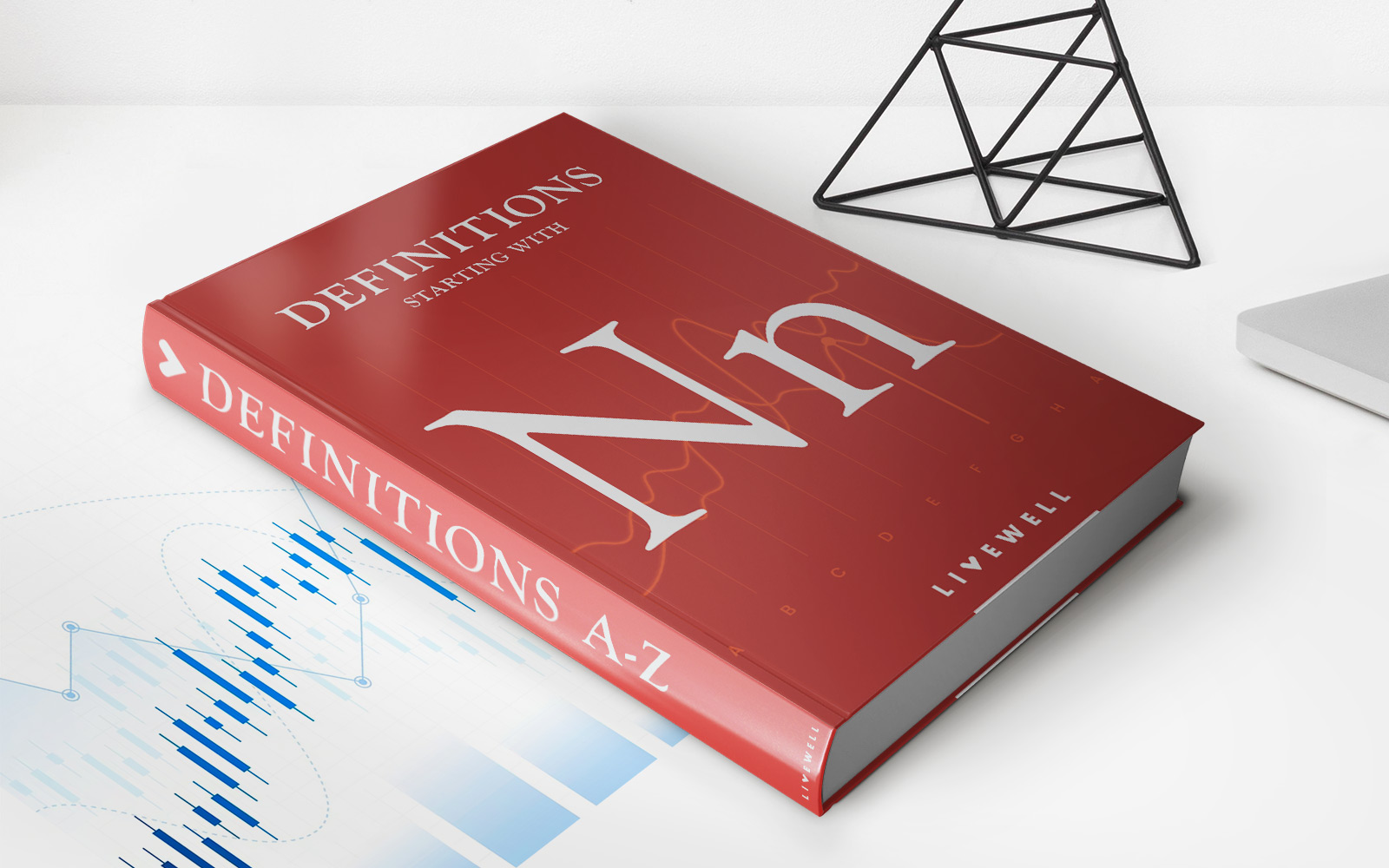Home>Finance>What Is The Impact Of Capital Structure Without Taxes On Firm Value


Finance
What Is The Impact Of Capital Structure Without Taxes On Firm Value
Published: December 25, 2023
Explore the impact of capital structure on firm value without taxes and delve into the intricacies of finance. Gain insights into optimizing capital allocation for enhanced financial performance.
(Many of the links in this article redirect to a specific reviewed product. Your purchase of these products through affiliate links helps to generate commission for LiveWell, at no extra cost. Learn more)
Table of Contents
- Introduction
- Definition of Capital Structure
- Impact of Capital Structure on Firm Value
- Capital Structure without Taxes
- Theoretical Framework
- Empirical Studies on Capital Structure without Taxes
- Factors Affecting Capital Structure without Taxes
- Criticisms and Limitations of Capital Structure without Taxes
- Conclusion
Introduction
Welcome to the world of finance, where understanding the impact of capital structure on firm value is of utmost importance. Capital structure refers to the way a company finances its operations through a combination of debt and equity. It is a critical decision that can significantly impact a firm’s profitability, risk, and ultimately its overall value.
When discussing capital structure, it is common to consider the role of taxes as they have a substantial influence on the financial decision-making process. However, in this article, we will explore the impact of capital structure without taxes on firm value. By isolating the effect of taxes, we can gain a deeper understanding of how different financing choices can affect a company’s worth.
Traditionally, the concept of capital structure without taxes has been explored to determine the optimal combination of debt and equity when tax benefits are irrelevant or unavailable. Understanding this concept is crucial as it allows us to assess the fundamental factors that contribute to a firm’s value beyond the scope of tax implications.
This article aims to provide a comprehensive overview of the impact of capital structure without taxes on firm value. We will delve into the theoretical framework and empirical studies that shed light on the relationship between capital structure decisions and a company’s financial performance.
Furthermore, we will explore the factors that influence capital structure decisions in the absence of tax considerations. By examining various determinants such as industry characteristics, company size, profitability, and growth opportunities, we can gain insights into how these factors shape a company’s capital structure.
It is important to note that the topic of capital structure without taxes is subject to ongoing debate and criticism. While understanding the theoretical foundations and empirical evidence is valuable, it is equally important to consider the limitations and criticisms surrounding this concept.
By the end of this article, you will have a solid understanding of the impact of capital structure without taxes on firm value and the factors that influence financing decisions. Whether you are an investor, finance professional, or simply curious about the intricacies of corporate finance, this article will provide you with valuable insights.
Definition of Capital Structure
In the realm of corporate finance, capital structure refers to the composition of a company’s financing sources, specifically the proportion of debt and equity used to finance its operations and investments. It represents the way a company funds its activities and manages its financial obligations.
Debt financing involves raising funds through loans or issuing bonds, where companies borrow money from external sources and agree to make regular interest payments and repay the principal amount over time. Equity financing, on the other hand, involves raising funds by selling shares of ownership in the company to investors, who become shareholders and have a claim on the company’s profits.
Capital structure decisions are crucial for companies as they impact various aspects of their operations. The choice between debt and equity financing influences a company’s risk profile, financial stability, flexibility, and overall value. Companies strive to strike a balance between the benefits and costs associated with different financing sources to optimize their capital structure.
When considering capital structure, it is important to understand the concept of leverage. Leverage refers to the use of debt to finance a company’s operations. By taking on debt, a company can amplify its profits during periods of growth. However, it also increases the risk as the company becomes obligated to make interest payments and repay the principal amount. Furthermore, excessive leverage can increase the company’s risk of financial distress if it is unable to meet its debt obligations.
In summary, capital structure is the mix of debt and equity financing that a company employs to support its activities. It plays a vital role in determining a company’s financial health, risk profile, and overall value. Finding the optimal capital structure is a crucial decision for companies as it directly impacts their ability to generate profits, attract investors, and maintain a competitive position in the market.
Impact of Capital Structure on Firm Value
The capital structure decisions of a company can have a significant impact on its firm value. The way a company finances its operations, through a combination of debt and equity, affects its profitability, risk profile, and ultimately its overall value in the market.
One of the primary ways that capital structure affects firm value is through the cost of capital. The cost of capital is the required rate of return that investors demand in order to invest in a company. By choosing an optimal mix of debt and equity, a company can minimize its cost of capital and maximize its firm value.
Debt financing typically carries a lower cost than equity financing, as interest payments on debt are tax-deductible. By leveraging debt, a company can reduce its overall cost of capital and increase its firm value. However, it is important to strike a balance, as too much debt can increase the risk of financial distress and negatively impact firm value.
Additionally, capital structure decisions can influence a company’s ability to generate profits and cash flows. Debt financing requires regular interest payments, which can put a strain on a company’s cash flow. If a company takes on excessive debt, it may have limited financial flexibility and struggle to invest in growth opportunities.
On the other hand, equity financing provides additional capital without the need for regular interest payments. This can give a company the flexibility to invest in research and development, expand operations, or pursue strategic acquisitions. By utilizing equity financing effectively, a company can enhance its growth potential and increase its firm value.
Moreover, the risk profile of a company is impacted by its capital structure. Debt financing introduces financial leverage, which magnifies both the potential gains and losses for shareholders. While taking on debt can amplify returns during favorable economic conditions, it can also increase the risk of bankruptcy or financial distress during economic downturns.
Investors and creditors analyze a company’s capital structure to evaluate its riskiness. A highly leveraged company may be perceived as riskier and may face higher borrowing costs and lower credit ratings. This can negatively affect its firm value and hinder its ability to attract investors or secure favorable financing terms.
In summary, the capital structure decisions of a company have a profound impact on its firm value. By finding the optimal mix of debt and equity financing, companies can minimize their cost of capital, enhance their cash flow and profitability, and manage their risk profile effectively. Understanding the relationship between capital structure and firm value is essential for financial decision-makers, as it enables them to make informed choices that align with the company’s strategic goals and maximize shareholder wealth.
Capital Structure without Taxes
In traditional corporate finance, taxes play a significant role in determining the optimal capital structure of a company. However, when exploring the impact of capital structure without taxes, we isolate the effect of tax considerations and focus on the fundamental factors that contribute to a company’s value.
This approach allows us to understand how different financing choices can influence a company’s worth in the absence of tax benefits. It provides valuable insights into the underlying factors that should be considered when making capital structure decisions.
Capital structure without taxes theory suggests that a company’s value is not solely dependent on the tax advantages of debt financing. It emphasizes that the optimal capital structure should be determined by other key factors, such as risk, cost of capital, cash flows, and the financial stability of the firm.
Without the influence of taxes, companies can focus on evaluating the trade-off between the benefits and costs of debt and equity financing without any distortion from tax shields, such as the deductibility of interest payments.
One of the key concepts in capital structure without taxes theory is the Modigliani-Miller theorem. This theorem states that, in the absence of taxes and other market frictions, the value of a firm is independent of its capital structure. It suggests that the value of a company is determined by its underlying cash flows and the risk associated with those cash flows, rather than the specific mix of debt and equity used for financing.
Furthermore, capital structure without taxes theory emphasizes that the value of a company is influenced by its ability to generate sustainable cash flows and manage its financial obligations effectively. Companies need to carefully evaluate their financing choices and consider factors such as the stability of cash flows, profitability, industry risk, and growth opportunities.
By adopting a capital structure that aligns with the company’s risk profile, growth prospects, and financial stability, firms can maximize their value without relying solely on tax advantages. This approach allows companies to make financing decisions based on sound financial principles rather than tax optimization strategies.
In summary, capital structure without taxes theory provides insights into how a company’s value can be influenced by various non-tax factors. By focusing on fundamentals such as risk, cost of capital, and cash flows, companies can make informed capital structure decisions that align with their financial objectives and optimize their overall value.
Theoretical Framework
When exploring the impact of capital structure without taxes on firm value, several theoretical frameworks provide insights into the relationship between financing choices and a company’s worth. These frameworks help us understand the underlying factors that influence capital structure decisions and their implications for a company’s value.
One of the key theoretical frameworks is the Trade-off theory. According to this theory, companies face a trade-off between the benefits and costs of debt financing. The benefits of debt include the tax advantage of interest payments and the ability to leverage the company’s returns. However, the costs of debt include the risk of financial distress, higher borrowing costs, and potential agency problems between shareholders and debt holders.
The Trade-off theory suggests that companies strive to find the optimal capital structure that balances the tax advantages and costs of debt financing. By carefully managing their debt levels, companies can maximize their firm value by taking advantage of the benefits of debt while minimizing the associated costs.
Another theoretical framework that contributes to understanding capital structure without taxes is the Pecking Order theory. According to this theory, companies prioritize their sources of financing based on the availability and cost of funds. The Pecking Order theory suggests that companies prefer internal sources of financing, such as retained earnings, followed by debt and finally equity issuance, as a last resort.
Under this theory, companies consider the asymmetric information between managers and investors. External financing, such as debt and equity issuance, may signal negative information about the company’s financial health, while internal financing signals positive information. Therefore, companies tend to rely on internal financing as much as possible, which can impact their capital structure decisions and ultimately their firm value.
Furthermore, the Capital Asset Pricing Model (CAPM) provides a framework to assess the relationship between a company’s capital structure and its cost of capital. According to CAPM, a company’s cost of capital is influenced by its systematic risk, which represents the risk that cannot be eliminated through diversification.
By analyzing the systematic risk of a company, the Capital Asset Pricing Model can help determine the required rate of return for investors. This information is crucial in assessing the cost of capital for a company and its implications for capital structure decisions.
In summary, several theoretical frameworks provide insights into the relationship between capital structure decisions and firm value. The Trade-off theory emphasizes the trade-off between the benefits and costs of debt financing, the Pecking Order theory highlights the preference for internal financing sources, and the Capital Asset Pricing Model helps assess the cost of capital. By considering these frameworks, companies can make informed capital structure decisions that maximize their firm value.
Empirical Studies on Capital Structure without Taxes
Empirical studies have played a significant role in investigating the impact of capital structure decisions without tax considerations on a company’s value. These studies have provided valuable insights into the relationship between financing choices and firm performance, shedding light on the factors that influence capital structure decisions in the absence of tax advantages.
One area of exploration in these studies is the relationship between leverage and firm value. Researchers have examined how the level of debt affects a company’s profitability, growth prospects, and overall value. The findings suggest that there is an optimal level of debt beyond which excessive leverage can lead to a higher risk of financial distress and decreased firm value. The precise level of optimal leverage may vary across industries and the financial health of individual firms.
Furthermore, empirical studies have examined the impact of financing choices on companies operating in different industries. The results indicate that certain industries, such as technology and healthcare, may have different optimal capital structures compared to industries such as manufacturing or utilities. This emphasizes the importance of considering industry characteristics and dynamics when making capital structure decisions.
Studies have also explored the relationship between firm size and capital structure decisions. Larger companies tend to have more access to diverse financing options, including bonds and bank loans, while smaller companies often rely on equity financing. The findings suggest that firm size has an influence on the choice of capital structure, with larger firms having a greater ability to leverage their operations and access debt financing.
Moreover, empirical research has examined the impact of profitability and growth opportunities on capital structure decisions and firm value. Companies with higher profitability may have more flexibility to take on debt and benefit from the tax shield, while growth opportunities can impact the optimal capital structure. The results suggest that profitable and growth-oriented companies may have higher levels of debt and higher firm values compared to their counterparts.
While empirical studies provide valuable insights into the relationship between capital structure decisions without tax considerations and firm value, it is important to note that these findings may vary depending on the specific context and time period of the study. Factors such as economic conditions, market trends, and regulatory environment can impact the results.
In summary, empirical studies on capital structure without taxes have contributed to our understanding of how financing choices impact company value. These studies have highlighted the importance of considering factors such as leverage, industry characteristics, firm size, profitability, and growth opportunities when making capital structure decisions. By leveraging the insights from empirical research, companies can make informed financing choices that align with their specific circumstances and optimize their firm value.
Factors Affecting Capital Structure without Taxes
When considering capital structure decisions without tax considerations, several factors come into play that influence the financing choices made by companies. These factors can have a significant impact on a company’s capital structure and its overall value. Understanding these factors is crucial for making informed financing decisions.
1. Industry Characteristics: Different industries have varying levels of financial risk and stability, which affects the optimal capital structure. For example, industries with stable cash flows and lower risk, such as utilities, may have a higher proportion of debt in their capital structure compared to industries with higher risk and volatility, like technology or retail.
2. Company Size: The size of a company can impact its access to different financing sources and influence its capital structure decisions. Larger companies often have greater access to debt financing due to their established track record and stronger creditworthiness. In contrast, smaller companies may rely more on equity financing due to limited access to debt markets.
3. Profitability: A company’s profitability plays a crucial role in determining its capital structure. Profitable companies have the ability to generate cash flows to service debt and are more likely to take on higher levels of leverage. Higher profitability can provide a cushion to absorb financial obligations and support debt financing, ultimately influencing the company’s capital structure.
4. Growth Opportunities: The growth prospects of a company can influence its capital structure decisions. Companies with significant growth opportunities may require additional financing to fund expansion plans. They may choose to issue equity to raise capital or leverage their operations by taking on debt. The availability of growth opportunities and the potential returns associated with them can impact the optimal capital structure.
5. Asset Tangibility: The tangibility of a company’s assets can affect its capital structure. Tangible assets, such as property, equipment, or inventory, can provide collateral for debt financing. Companies with a higher proportion of tangible assets may have a higher capacity to secure debt and may favor debt financing in their capital structure.
6. Market Conditions: External market conditions, such as interest rates, availability of financing, and investor sentiment, can significantly influence a company’s capital structure decisions. Favorable market conditions may incentivize companies to take on debt at lower costs, while adverse conditions may lead to a more conservative capital structure with a greater emphasis on equity financing.
7. Risk Appetite: Companies’ risk appetite and risk management strategies influence their capital structure decisions. Risk-averse companies may opt for a lower level of leverage to minimize the risk of financial distress. Conversely, risk-seeking companies may take on higher levels of debt to potentially amplify returns. The risk culture within a company and its management’s risk tolerance play a crucial role in capital structure decisions.
It is important to note that these factors interact and vary across companies and industries. The optimal capital structure for a specific company depends on a careful assessment of these factors in light of its specific circumstances and strategic objectives.
By considering these factors, companies can make informed capital structure decisions that align with their risk profile, profitability, growth opportunities, and financing needs, ultimately influencing their value in the market.
Criticisms and Limitations of Capital Structure without Taxes
While the study of capital structure without taxes provides valuable insights into the factors that influence financing decisions and firm value, it is important to acknowledge the criticisms and limitations surrounding this approach. These criticisms highlight the complexities and various considerations that arise when analyzing capital structure decisions without tax considerations.
1. Overemphasis on Debt-Related Factors: Without considering tax considerations, the focus on debt-related factors such as leverage and interest payments might overshadow other important considerations. Factors such as operating risk, market dynamics, competitive advantage, and industry-specific characteristics are crucial in determining the optimal capital structure but may receive less attention in the absence of tax implications.
2. Neglected Agency Costs: Capital structure decisions involve a balance between the interests of shareholders and debt holders. Agency costs, such as conflicts of interest between shareholders and managers, can impact capital structure choices. Without tax considerations, the focus on agency costs related to debt financing may be diminished, potentially leading to suboptimal capital structure decisions.
3. Simplified Assumptions: Capital structure without taxes models often rely on simplified assumptions about capital markets and investor behavior. These assumptions may not fully capture the complexities of real-world financing decisions, such as asymmetric information, transaction costs, and behavioral biases, which can influence capital structure choices.
4. Dynamic Nature of Capital Structure: Capital structure decisions are not static and can change over time as a company’s financial circumstances evolve. The absence of tax considerations may overlook the dynamic nature of capital structure and fail to account for the potential shifts in financing strategies to optimize firm value.
5. External Factors Impacting Firm Value: Capital structure decisions without tax considerations may not fully consider the broader external factors that impact a company’s value, such as macroeconomic conditions, regulatory changes, and industry disruptions. These external factors can influence the optimal capital structure and should be considered alongside internal factors.
6. Limited Generalizability: The findings related to capital structure without taxes may be context-specific and may not apply universally across different industries, company sizes, or economic environments. The optimal capital structure is likely to vary based on the unique characteristics and circumstances of each company.
Despite these criticisms and limitations, studying capital structure without taxes provides valuable insights into the fundamental factors that influence financing decisions and firm value. While tax considerations are significant in the real world, understanding the factors beyond taxes helps to develop a more comprehensive understanding of capital structure’s impact on firm value.
It is essential to approach the study of capital structure without taxes with caution, leveraging a holistic view that considers a range of factors and recognizes the complex dynamics at play in the real-world decision-making processes.
Conclusion
Capital structure decisions are fundamental aspects of corporate finance that have a profound impact on a company’s value. While tax considerations traditionally play a significant role in guiding these decisions, studying capital structure without taxes provides valuable insights into the fundamental factors that shape financing choices and their implications for firm value.
Through an exploration of theoretical frameworks and empirical studies, we have gained a deeper understanding of how capital structure decisions without tax considerations influence a company’s profitability, risk profile, and overall value. The Trade-off theory and Pecking Order theory have shed light on the trade-offs and preferences that companies consider when balancing the costs and benefits of debt and equity financing.
Furthermore, the examination of factors such as industry characteristics, company size, profitability, growth opportunities, and market conditions has highlighted their influence on capital structure decisions. These factors contribute to finding the optimal capital structure that aligns with a company’s risk appetite, financial stability, and growth objectives.
While the study of capital structure without taxes has provided valuable insights, it is important to acknowledge the criticisms and limitations surrounding this approach. Factors such as agency costs, dynamic nature of capital structure, and external influences should be considered when making financing decisions in the real world.
In conclusion, capital structure without taxes is a concept that offers a deeper understanding of the factors beyond tax implications that influence a company’s financing choices and firm value. By considering factors such as industry characteristics, company size, profitability, growth opportunities, and market conditions, companies can make informed capital structure decisions that optimize their financial performance and enhance their overall value in the market.
It is crucial for finance professionals, investors, and decision-makers to recognize the importance of a holistic approach when evaluating capital structure decisions. By incorporating a range of factors and recognizing the complexities involved, companies can create a balanced and optimal capital structure that supports their strategic objectives and maximizes shareholder wealth.














